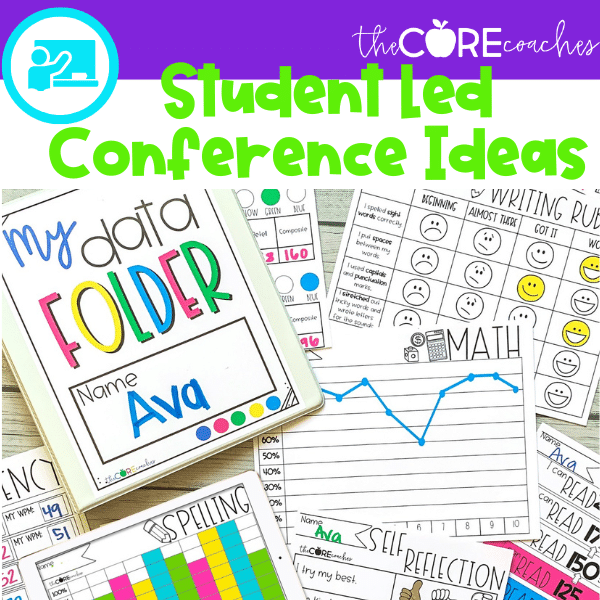If you found this article then we can assume back to school is already on your mind. However, we hope that you took full advantage of your whole summer before searching back to school.
First things first. If you didn’t take full advantage of your summer break yet, there is still time! Save this blog post and go take some “me time” before you come back. We’ll wait!
Okay, now that you are fully rested and recharged we are excited to help you get back in the groove of teaching! For years, we sent home back to school lists for our students to prepare for the new year and now we have shifted that responsibility to creating a Back to School for Teachers list.
Whether you are gearing up for your first year as a new school teacher or you have been doing this for decades, these 12 things will ensure that you are ready for the new school year.
1. Reflect on the Previous Year
Take time to reflect on the previous academic year, identifying both successes and areas for improvement. This reflection may include reviewing lessons, routines, and classroom management.
As you look at the different lessons and your classroom management strategy, consider what teaching strategies worked well (and which did not work so well). Consider how your classroom management strategies supported the classroom community and learning environment and if there are any changes you would like to make.
In addition, you may want to reflect on how you used your time. Did you use your time at school in a way that allowed you to “leave work at work”? How might you restructure your time to set better work-life boundaries? These are just a couple of questions to help you get started.
2. Set Yearly Objectives and Goals
Once you have reflected on your previous year it is easier to set new goals. In the same way that you create clear objectives and goals to guide daily lessons, setting goals to guide the year is also helpful.
Goals can be created for yourself as the teacher, as well as your students. You may consider what new strategies you’d like to try or what outcomes you’d like to see for your students.
Once you have reflected on your previous year it is easier to set new goals. In the same way that you create clear objectives and goals to guide daily lessons, setting goals to guide the year is also helpful.
Goals can be created for yourself as the teacher, as well as your students. You may consider what new strategies you’d like to try or what outcomes you’d like to see for your students.
3. Review and Update Curriculum
Upon reflecting on your previous year and setting goals for the new year, it may be time to update your curriculum. Beyond updates that you may want to make based on your personal reflection and goals, consider new additions to the curriculum.
Review any updates to your state or district standards, as well as any changes your school may have made to a curriculum plan. If you are changing schools this year, this is an especially important step to include.
In addition, think about new texts or activities you’d like to implement. Is there a new book you want to use for a read aloud? Did you come across an exciting new STEM activity? Think of how you might implement these into your new school year.
4. Prepare Teaching Materials
Once you have reviewed the curriculum you can start preparing your teaching materials. This may include updating digital documents and making new printables.
However, this does not mean you need to print every worksheet for the new year.
If you have time though, it does not hurt to print at least a month or so of work. Then it is ready to go and saves you time down the road.
While you are preparing your teaching materials you may also want to double-check the technology in your room. Make sure that your projector, remotes, smart board, and computers are working properly.
5. Make Sub Plans
Depending on your school you may already be required to create emergency sub plans. These are usually given to the school secretary to keep on hand if needed.
Even if your school does not require emergency sub plans, we encourage you to make a sub folder with at least one day of school work. However, if you can put together a few days of work, even better!
Having a sub folder with a few days’ worth of lessons is a wonderful way to be prepared when the unexpected happens. This way, whether you get sick unexpectedly or have a family emergency you don’t have to stress about getting sub plans ready.
When choosing activities for a sub folder think about activities that have a learning routine you will teach your students. This makes it easier for the sub to teach and for students to continue to learn.
6. Develop Classroom Rules and Expectations
Whether you are just stepping into the classroom or you are returning as a veteran you most likely have some classroom rules you are planning to implement. Having a clear set of classroom rules can help students know the expectations of the classroom.
However, while rules can be part of creating a classroom management protocol they are not the essential piece to effective classroom management. They are a good starting point, but they are not always the most effective long-term.
Therefore, we created a classroom management strategy that encompasses 6 different focus areas. Keep reading to explore our classroom management strategies more.
7. Develop a Classroom Management Plan
If you have been teaching for more than a year then you may have seen how the rules don’t always work. One of the reasons for this is that rules typically lead to consequences and consequences often have a negative connotation. Moreover, consequences are a result of something NOT being done.
Rather than focusing on the negative consequences and what will happen if a student does NOT do something we invite you to consider how you can prepare students for success from the beginning. Consider focusing on the expectations you want to see and then teaching your students how to meet those expectations.
To help you get started, consider the 6 focus areas we found to be the most important for establishing effective classroom management.
- Establish Positive Relationships
- Create a Positive Classroom Environment
- Make Effective Routines & Procedures
- Focus on Student Engagement
- Encourage Student Accountability and Leadership
- Take Time for Time Management
You can dive deeper into these six areas and get access to dozens of ready to teach resources by joining us in our classroom management course.
8. Create a Student-Centered Classroom
One of the areas we focus on in our classroom management modules is creating a positive classroom environment. One of our favorite ways to do this is by focusing on building a student centered classroom.
A student centered classroom goes beyond student centered learning; it actually encompasses having students take part in decorating the classroom. Yes, that includes bulletin boards!
Now, we know that giving over bulletin board space can be difficult. We will be the first ones to admit we did not want to do it. We wanted to keep our classrooms as cute as can be with everything done by us.
However, when we gave up control and started to invite students to create the space with us we noticed a huge difference in engagement. By giving students literal space to be seen in the classroom, they began to take more ownership of their learning.
If you need some ideas on how to easily make a student centered classroom, take a peek at our back to school bulletin boards. These can be used as icebreaker activities and to decorate bulletin boards!
Student Centered Bulletin Boards
9. Prepare Icebreaker Activities
Icebreaker activities are a traditional part of going back to school. While icebreakers are meant to be fun, you also want them to be informational and focus on community building.
Since you may already have your favorite go-to icebreakers, take a minute to reflect on them. Consider how they help to create a community in your classroom. Moreover, do you have a variety of activities that you can use for students to get one another AND for students and the teacher to get acquainted?
If you find you need some new ideas, try out our bulletin board icebreakers above or some of the other fun community building activities we have created:
10. Create a Communication Plan with Parents:
Building a positive classroom community goes beyond the classroom. It includes developing a clear way to communicate with parents and guardians.
One way to begin the year off with a clear path of communication is to write a welcome letter to parents. You can send this out as an email, post it on a class blog, or give it to parents at back to school night.
In the letter, include not only information on the curriculum but also your expectations in the classroom. This includes things like your expectations for behavior and turning in school work. Providing clear expectations to the parents helps establish their support from the beginning.
Along with sharing your expectations, provide parents with a clear understanding of what they can expect from you. Include how they can expect to hear from you with any concerns and how they can reach out to you during the year.
11. Embrace Professional Development Workshops
Trust us, we know that professional development can be the LAST thing you want to participate in when trying to get ready for a new school year! It can often feel like one more thing to check off a list and one more thing taking time away from preparing your classroom.
Even though there are times when professional development can feel unnecessary, there are also times when you get great takeaways. To help you go into the new school year with a positive mindset we invite you to embrace professional development as much as possible.
You don’t have to love everything about it but try to focus on taking one key thing away from each session. Just focusing on one key takeaway can make a workshop feel beneficial since you can immediately apply the takeaway to your classroom.
12. Plan for Back to School Night
As an elementary teacher you may be asked to host back to school night for your new students and their parents. This is an exciting time to get kids excited about the new school year and get familiar with you as their teacher and their new classroom.
While it can feel like an extra thing to prepare at the beginning of the year we encourage you to create a back to school night that you can repeat every year. Although it will take a little extra planning now, in the future you will be happy you have everything ready to go.
If you want to save time and just skip to having everything ready to go NOW, we have you covered with our Back to School Night Meet the Teacher resource!
Back to School Checklist
Every teacher is different and every school is different. Therefore, there may be other things that you personally have on your back to school checklist.
Whatever may be on your own personal checklist we hope that our list will be a great addition and help get you started with shifting your thinking from summer to school. We also hope it helps set you up for a wonderful new school year!





